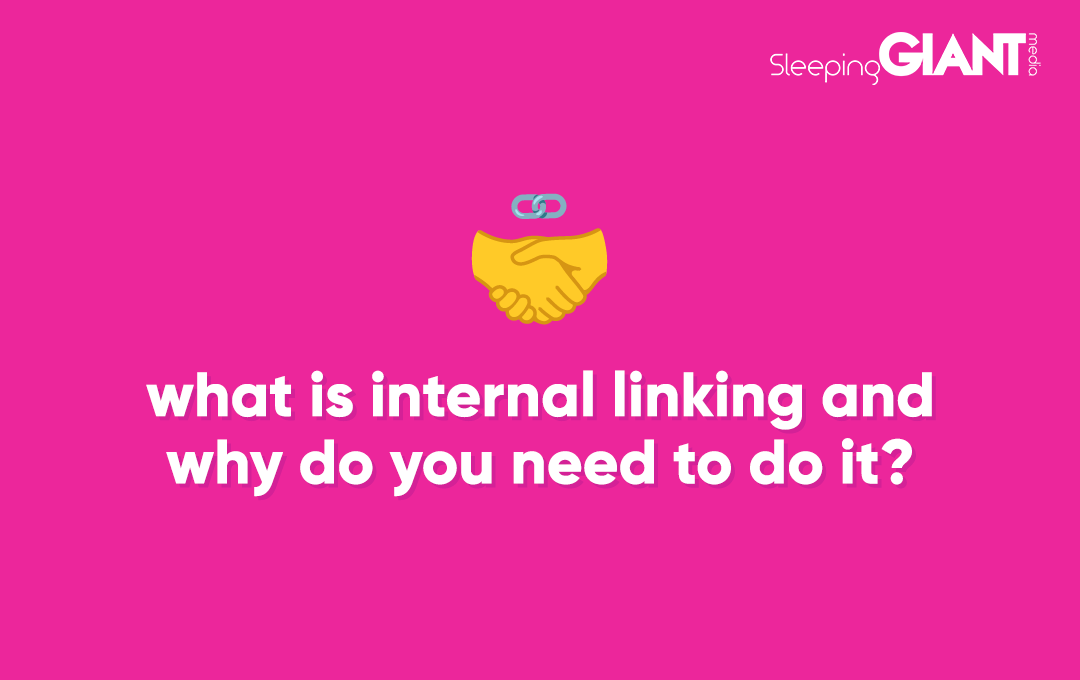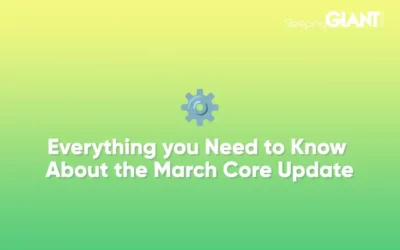
What is Internal Linking & Why Do You Need to Do it?
Whether it’s content on product pages, long-form blog posts, or even client case studies, a considerable chunk of a business’ online presence is mediated through the words written on its website.
And, while that seems relatively straightforward, content marketing extends far beyond just the written word. Aside from headers, alt text, images, product descriptions, and textual variation, effective and well-optimised content also contains more complex, helpful features such as internal links.
Let’s take a look at what these are and why they should feature in every piece of content you create for your brand.
What is internal linking?
Internal linking refers to the process of including links to your own web pages within your site content.
For example, if you are writing a blog and mention a product or service you offer within that content, it is best practice to link from that mention to the relevant product/service page you’re talking about.
As an example, if this blog is about internal linking in optimised content, it would be useful to link to our SEO services page at some point, right?
Look at that! Clever, no?
You may already be using internal linking within your website content, and if you are, you get a big pat on the back, well done! But if you aren’t, this blog will get into the nitty gritty of internal linking for you.
What are the benefits of internal linking?
There are multiple reasons why businesses should use internal linking throughout their sites. Consider it less of a ‘nice to have’ and more as a vital system that will keep your website alive. Let’s run through the core benefits below.
Page relevance
In order to make sure that your content is aligned with SEO best practices, it’s essential that it is A) relevant and B) helpful. We need only think about Google’s Helpful Content Update back in August of 2022 to appreciate just how important this is.
Helpfulness and relevancy are ranking factors which help Google decide where your site belongs on the search engine result page (or SERP). Having internal links within a piece of content to other pages on your site that:
- Are relevant in some way
- Add more context (like an author page for a blog)
- Offer deeper insight (EG: a case study)
- Give users more information
will ultimately signal to Google that your content is helpful, relevant, and user-friendly. In turn, this will help to improve its rankings in the long run.
Improved site click-through rate:
Site click-through rate is something you’ll want to be as high as possible — and from the right audiences, too. A high click-through rate is a good indication that users find your content and ads are being well-received by your audiences.
Adding internal links from one page to another within your content literally allows your users to click through from page to page. As long as the link provided is relevant, and the user does not bounce off the site after, then adding internal links to your content will really help benefit your site’s CTR and ultimately, your SEO rankings.
Easier site navigation and user experience:
Site navigation and user experience is another important SEO ranking factor for your website. Internal linking is a great way to allow your users to navigate your website easily.
Having relevant internal links within your content means that if a user sees something relevant to them that they want to delve deeper into, like creating WhatsApp stickers, for example, they can easily do that with a single click! This is a really good user experience practice to follow and, overall, will elevate your content rankings and heighten the value of your content to your users.
Internal linking best practices
So, now that we know what internal linking is and why we should use it in our content, let’s explore the best practices for how we should use internal links.
Where should your links go?
Ultimately, it’s down to you, the content creator, where your internal links actually lead to. However, a certain degree of strategy is required here.
It makes sense to send people to the pages that they will find the most useful. But also, it is wise to think about which of your pages convert the best as you’ll want to be linking to these pages as well, where relevant. For example, you might have a form you want to lead people to gain you a conversion. Well, why not link it in your content?
Crawlable linking structure
Making sure you have a crawlable linking structure is also vital. This allows Google to actually follow your links properly and understand which pages are more authoritative than others.
Your homepage, for example, is your “most important” page, right? The highest point on your website, if you like. This page should link to other pages within your website which are secondary to the home page, and then, from those pages, the next most relevant pages — and so on…
This will help Google — and your site users — to understand your site content much better, and get access to the content it needs. But, remember, no page should have more than 250 internal links.
Anchor text
Anchor text is next on our list of best practices. For those who don’t know, anchor text is the clickable text that will usually be highlighted in blue or a different colour linking to your chosen URl.
The anchor text needs to include keywords relevant to the URL you have chosen to link to. This will show crawlers and users that the page they are going to link to next is relevant to the content they are currently reading.
So, instead of using vague anchor text like “click here”, for example, you want to fit the link into a sentence naturally.
How to check internal links on a page
Finally, it’s important to know how to check internal links on a page to review them for relevancy and see if you can improve them.
To check your internal links, we suggest using a crawler such as Screaming Frog. This tool is really simple to use. In fact, all you need to do is download “inlinks” from your Screaming Frog crawl. These, as you can guess, are your internal links. Screaming Frog has a useful blog about analysing your link position and improving your internal linking, too, so we recommend you check that out and get crawling your site!
Get linking!
Now that you know the ins and outs of internal linking, why not give it a go yourself?
Keep our blog to hand to help you every step of the way. And, if you have any further questions about content creation, SEO, or more, you can check out our other useful blog posts.
Lastly, don’t forget our amazing team of experts are always on hand to help you, so get in touch with us if you feel you need an extra helping hand.
Blog
Everything you Need to Know About the March Core Update
We knew it wouldn’t be long before Google released their first core update of...
Giant Wednesday
How To Optimise Images For Websites
Digital Marketing, technology & business insights, how-to's and explainer...
Follow Us
Sign Up For More
Stay up to date with the latest happenings, learnings, events & more with our GIANT Newsletters.
Contact Us
Top Floor, The Civic Centre, Castle Hill Avenue, Folkestone CT20 2QY.




